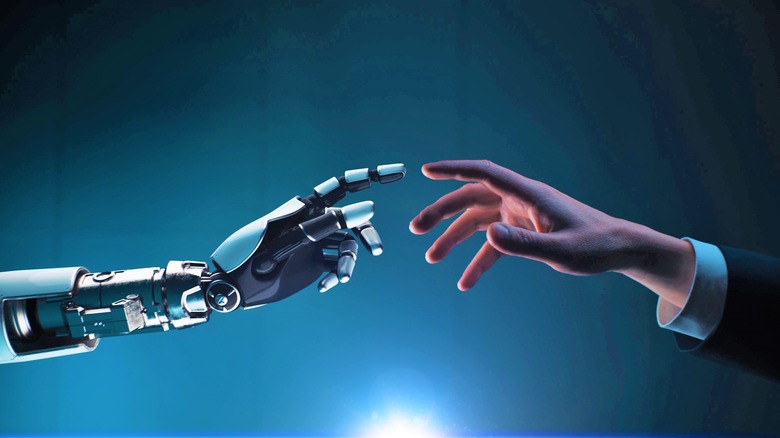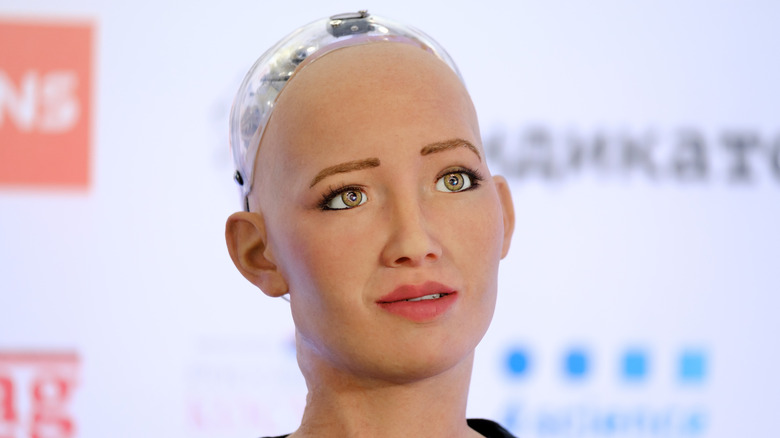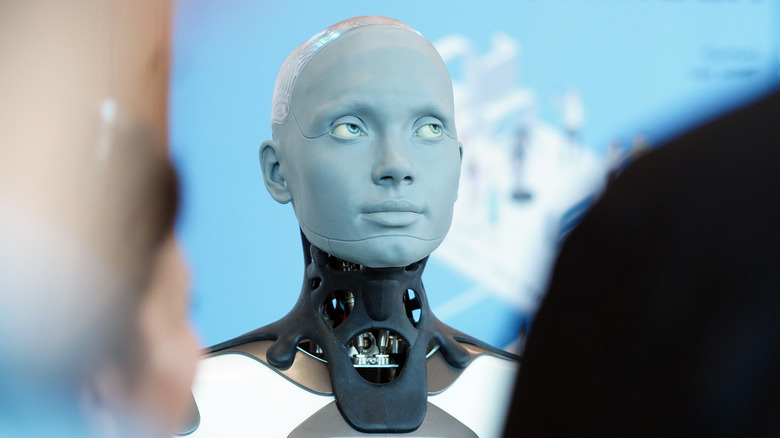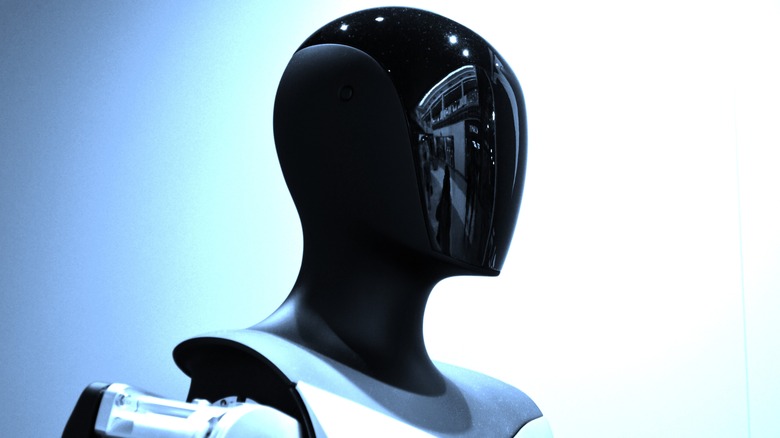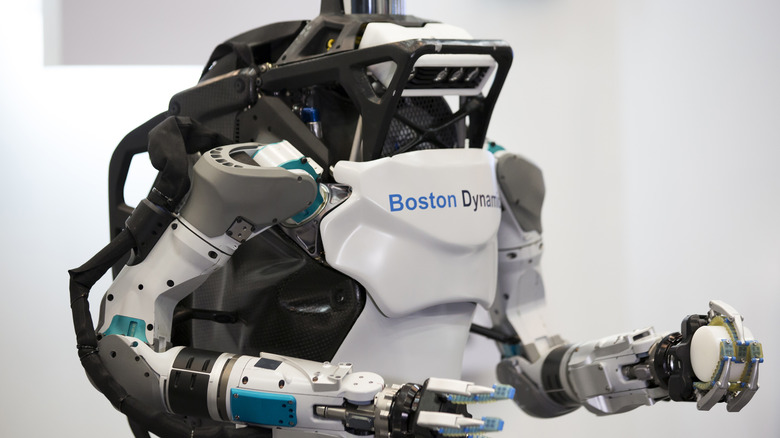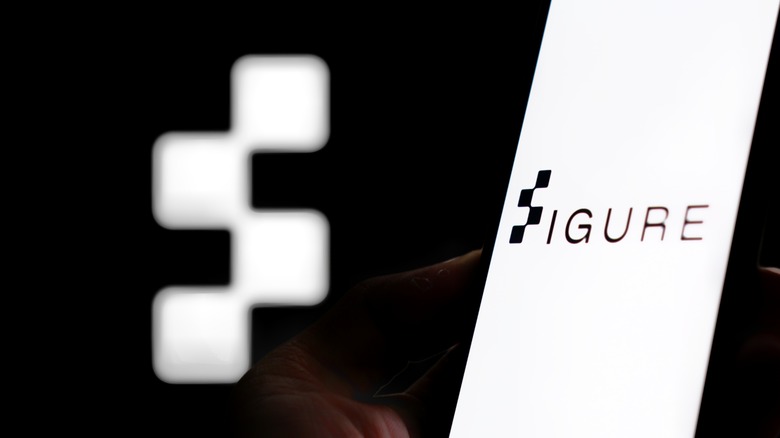5 Companies Working On Humanoid Robots
Humanoid robots are joining space travel, self-driving cars, and virtual assistants as '90s tech wishes that have come true. The concept has been sci-fi fodder for decades — as far back as 1927, in the silent film Metropolis. Hollywood has reflected the culture's fascination with the idea of robots engineered with human attributes. In fact, entire franchises have been created around them — think "Terminator," "Blade Runner," and "Westworld."
However, the idea did not remain trapped in film. In 1939, at New York's World Fair, engineers from Westinghouse Electric Corporation introduced the first working humanoid robot, Elektro. The nearly 7-foot-tall machine could move and talk, although with a vocabulary of only 700 words. It could also perform fun tricks like blowing balloons and smoking cigarettes.
Now, in the 2020s, companies are reporting progress in developing more advanced humanoid robots and we're seeing the potential for some impressive use cases, from menial jobs and medical research to space exploration. These prospects might be more aspirational than anything else, but a future aided by advanced robots is still an exciting — if slightly terrifying — one. Here are some of the companies that are making it happen.
Hanson Robotics
Hong-Kong based Hanson Robotics are the minds behind Sophia, the social humanoid robot partly modeled after iconic actress Audrey Hepburn. While that's difficult to believe, the machine does possess some seriously impressive attributes. Powered by AI and neural networks, Sophia is equipped with natural language and visual processing capabilities that allow it to engage in interactions like a human. It can form coherent sentences, answer questions, make eye contact, and synchronize body movements with speech. It uses machine learning algorithms to improve on nuance and response, and it is even programmed with a sense of humor.
Sophia also has a face that can mimic a range of emotions and expressions, thanks to a patented material called Frubber, a nanotech skin that emulates real human musculature and movement, as per the company's website. In his paper, Upending the Uncanny Valley, company CEO David Hanson writes that this realism could open up new artistic possibilities for humanoid robots, instead of just freaking people out. If you're curious, we wrote about what makes realistic robots so unsettling.
With appearances on The Tonight Show and CNBC, Sophia is the most popular, but not the only creation of Hanson Robotics. The company has produced eleven other robots, modeled after different genders and races, and designed for different service applications, from elderly care and customer service to research, education, and therapy.
Engineered Arts
Engineered Arts is an English robotics company focused on creating sophisticated robots for service and entertainment. Its flagship product is the now popular Ameca, a humanoid the company claims to be the world's most advanced robot. Powered by proprietary Tritium software and Mesmer technology, Ameca can engage in intelligent interaction and express some very realistic emotions. Like Sophia, Ameca cannot yet walk or run, but its modular design makes it possible to customize both hardware and software for specific use. Thanks to that design, it's also easier and more affordable to upgrade the unit in the future, since users won't have to buy a whole new robot. We have a separate article looking at Ameca in more depth if you're curious.
Ameca also has a desktop version, which is a bust-sized robot with all the expressive capability of the full-bodied unit — except without the arms, hands, and torso. Besides Ameca, Engineered Arts' robot lineup includes Quinn, a unit designed for customer service and Robothespian, an actor character. Aided by telepresence software and cloud operation, you can remotely control each robot's movement and interactions.
Tesla
It's hardly surprising that Elon Musk's company dipped its hands into the futuristic robot pie. The CEO revealed their concept humanoid in August 2021, when it was still being cosplayed by a human. Tesla calls the prototype Optimus, and promises some very ambitious features. The robot will be bipedal — a feat that only a few manufacturers have been able to achieve with their robots — and also an auto-piloted unit, like the self-driving Tesla but in humanoid form. Optimus is designed to take over dangerous and repetitive tasks from humans, with its potential use cases ranging from logistics and factory work to assisting around the house.
In December 2023, a Tesla progress video showed a second-gen Optimus robot walking, then recognizing and manipulating objects. The unit has the characteristic featureless head of store mannequins, which helps avoid the unsettling feeling users experience with hyper-realistic robots. That, plus the robot's limited 5 mph speed, will make Optimus non-intimidating, claims Tesla. According to reports, Elon Musk projects that Optimus will be functional enough to do some factory jobs by the end of 2024, and could hit the market by the end of 2025.
Boston Dynamics
Boston Dynamics is an MIT spinoff – now owned by Hyundai – that found popular acclaim with its quadruped robot, Spot, and the hydraulic humanoid, HD Atlas. Videos of the HD Atlas robot dancing and doing acrobatics continue to make the rounds on social media. However, the company has announced that it's retiring the HD Atlas after 11 years of research and development, and replacing it with a sleeker, all-new electric model capable of some unusual movements.
Thanks to a 360 degree swivel head that might remind you of the Pixar lamp, and similar 360 degree joints, the all-new Atlas can walk both forward and backward, and do bends and flips. This is an advantage, Boston Dynamics assures, since this kind of unconventional movement allows Atlas to complete tasks more efficiently than with a human range of motion. The electric shapeshifter will retain all the capabilities that HD Atlas had, including lifting and maneuvering objects, but will also explore "several new gripper variations" to make it suitable for work in different industries.
Figure
Like Tesla, Figure initially presented its humanoid robot as a concept. The company revealed a render in March 2023, and came out of the gate with several ambitious promises. Already named Figure 01, the robot would be able to think, learn, speak, and apply itself to work across several suitable industries. These specs raised justified skepticism, especially considering Figure was founded in 2022 and is still a relatively new company. Nevertheless, the team comprises engineers with a strong background in robotics, including former employees of Tesla, Google DeepMind, and Boston Dynamics.
Figure has also put out realistic projections of their end product. It will take time for humanoid robots to be able to mimic the complex functionality of the human body, CTO Jerry Pratt told IEEE Spectrum, but the goal is to get as close as possible.
Furthermore, the company already has a working, and walking, prototype, within a year of its initial announcement. The company has also announced a partnership with ChatGPT's creator, OpenAI, to use the company's large language model to make its robot smart, interactive, and self-reliant. The goal is to create one robot for every human, and relieve humans of dull, dirty, and dangerous tasks across various industries.
Robotics still has a long way to go, but science fiction is becoming reality right before our eyes. Now that mankind has made giant leaps with space travel and slower, more mechanical strides with robotics, who's to say flying cars aren't next?
